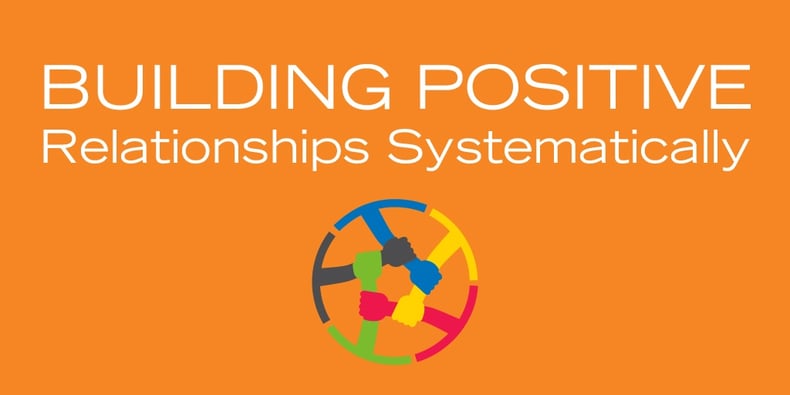
“Positive relationships with students.” “Making strong connections.” “Being relatable to your students.” No matter how I ask about it in an interview, it all essentially means the same thing. Can the teacher connect with students? I ask it every time, and it is one of the most important questions of the interview.
Here's why this is critical: Connecting with students not only relates back to the student’s sense of belonging in school, it's also heavily tied to motivation. If a student isn’t motivated in the classroom, the teacher’s first “go-to” should be to try to connect with them. This should come before any incentive program or consequence for lack of trying.
Motivation is just one of many reasons why this is so important. It also helps students to understand social skills, have a trusted adult in their life, know that they are cared for, and feel like they belong.
And when things are important, we want to make sure they happen. Just like the “wash your hands before returning to work” sign in the bathroom of the restaurant (this is very important!), critical behaviors should be done systematically.
What Do We Mean by Systematically?
Systems thinking is a way of organizing thoughts, conversations, and knowledge within an organization. Here is a good, concise definition from the Waters Foundation. When thinking about schools, it is easy to think in terms of classrooms. In reality, we should be thinking in terms of a system, where the entire building, district, and state function as a system impacting one another in various ways. Practically speaking, for me this means that all the students have access to what they need and we have a way to measure or know that this happens.
How Can Connections With Students Be Systematic?
There are various ways that schools can approach this, and at first, it can feel very forced. Unlike testing and data, which can easily become systematized, relationships can be harder to both manage and measure. Here are some ideas:
- Collect data to demonstrate whether or not you have succeeded: What does this data look like? The Gallup Student Engagement Survey is one data collection tool, but really anything can be developed to dig into the question of connection. I would suggest questions about the teacher specifically “knowing me on a personal level.” It is also critical that every student has a response and a chance to have input.
- Use instructional techniques that help create connections: By doing cooperative learning activities, such as Kagan, the class can connect with one another. As a teacher, it is important to participate in the process of building the community as a team—at least some of the time.
- Have a plan detailing what to do if students aren’t connected: This can be where the rubber meets the road. Kids come in all different shapes and sizes, so there will be some who are just plain hard to relate to. If you think about this issue as a “system” issue, there should be a plan in place to intervene. This could be lunch with the student and some of their friends, or it could be a special unit or day centered around something that student really enjoys. It could also be a phone call home to get the rest of the picture, or perhaps a discussion with the counselor is in order. No matter what the situation, not connecting isn’t an option.
- Talk to others who interact with distant students: If you are the primary teacher, it is critical to try to develop a good relationship. It makes sense to collaborate with those around you if a student seems distant to you. Maybe the art teacher has some ideas, or perhaps some teachers from last year figured out what worked really well. These student conversations don’t happen enough in schools.
- Make sure it is positive—and if it isn’t for some reason, work hard to fix it: Especially at the start of the year, try hard to make sure interactions are not negative. At times we just plain “get off on the wrong foot” with a person. If this happens with a student, don’t be too proud to apologize and work hard to reconnect in a positive way.
In the end, the litmus test for this is not the teacher, but the student. Does the student feel connected? Does the student feel the teacher cares about them as a person and cares about their future? As teachers we sometimes feel like we are totally plugged in with all our students, but if they don’t feel it, then it really isn’t the case. Create a system in your classroom or in your school to develop positive relationships and successful students.
How do you connect with your students? Have some methods worked better for you than others? Let us know in the comments below!


